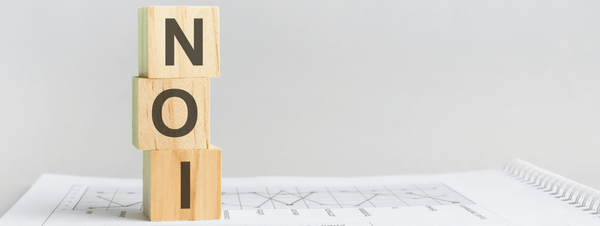Landlord tax: an up-to-date guide for 2022
If you’re a landlord, figuring out which taxes you need to pay (and how much) can be confusing. And there have been some significant changes to taxation laws affecting landlords since 2015: most notably, the new Section 24 of the Finance Act 2015, which limits the amount of tax relief landlords can claim, and changes to how landlords have to report their income to HMRC.
If you can’t think about Income Tax, Stamp Duty and Capital Gains Tax (not to mention National Insurance, allowable expenses and tax brackets) without your head spinning, read on for our up-to-date guide to landlord tax for 2022.
What taxes do I need to pay?
There are various taxes that you might have to pay as a landlord, and the amount you’ll pay depends on factors such as your income level and whether you’ve lived in the property in the past. Generally, you’ll have to pay tax as a landlord when you buy a property, when you earn income from it (through rent) and when you sell it.
Buying a property: Stamp Duty Land Tax
If you buy a property worth over a certain amount in England, you need to pay Stamp Duty Land Tax (SDLT). This usually applies to properties worth over £125,000, though the threshold is higher if you’re buying your first home. For buy-to-let properties, Stamp Duty rates are tiered and start at a lower rate, so landlords are at an advantage here.
Here are the rates you can expect to pay on a buy-to-let property in England, depending on its value:
- £0–£125,000: 3 per cent
- £125,001–£250,000: 5 per cent
- £250,001–£925,000: 8 per cent
- £925,001–£1.5 million: 13 per cent
- £1.5 million +: 15 per cent
Tax rates only apply to the proportion of the purchase price above the threshold. For example, if you buy a property for £220,000, you would pay 3% on the first £125,000 (£3,750) and 5% on the remaining £95,000 (£4,750), giving you a total tax bill of £8,500.
The same rates apply to second homes and holiday homes, though in all cases there’s an exemption if the total value of the property is £40,000 or less — in this case, you won’t pay any SDLT.
When you buy a property, you’re obliged to send your SDLT return and pay your SDLT within 14 days of completing the purchase even if you think you’re exempt from paying.
Buyers in Wales and Scotland are subject to slightly different rules and rates, through the Land and Buildings Transaction Tax (Scotland) and the Land Transaction Tax (Wales).
Letting a property: Income Tax
When you let a property, you need to pay Income Tax on any income you earn. The rules for calculating Income Tax on rental income have changed recently as a result of Section 24 of the Finance Act 2015 coming fully into force in the tax year 2021–22.
With the new rules, landlords must pay Income Tax on all rental income after allowable expenses (such as maintenance costs, property management fees or utility bills) have been deducted. They can then claim a tax credit worth 20% of the annual mortgage interest.
Income Tax on rental income is calculated at the same rate as tax on other income such as income from employment, self-employment or business income:
- Up to £12,570: no income tax
- £12,571–£50,270: 20 per cent (basic rate)
- £50,271–£150,000: 40 per cent (higher rate)
- £150,000+: 45 per cent (additional rate)
Note that again, the rate of Income Tax only applies to the portion of your income within that range. Rental income is also added to any other income you receive, so if your income is at the higher end of one of the three brackets above, it could tip you into paying the higher or additional rate.
National insurance payments for landlords
In some cases, you may also have to pay Class 2 National Insurance (NI) on your rental income. This is the case if you’re running a business, and:
- You make more than £6,515 per year from rental income
- Being a landlord is your main job
- You let more than one property
- You’re buying new properties to let out
Selling a property: Capital Gains Tax
You have to pay Capital Gains Tax (CGT) if you sell a property, and:
- It is not your home (e.g. you were letting it out to tenants)
- You made a profit on it
The CGT tax-free allowance is currently £12,300, meaning you don’t pay CGT on the first £12,300 of the profit you made from selling the property. After this threshold, Capital Gains Tax is paid on residential property at the following rates:
- 28 per cent if you’re a higher or additional rate taxpayer
- 18 per cent if you’re a basic rate taxpayer
You can work out which tax bracket you fall into by adding your income (minus the personal allowance) to your capital gains (minus the Capital Gains tax-free allowance) — which could push you into a higher income bracket for the year and mean you have to pay CGT at the higher rate. For example:
Let’s say you earn £40,000 per year in combined income from a salary and letting a house. You sell the house and make a profit of £14,000. To work out the Capital Gains Tax you need to pay, you:
- Deduct your personal allowance of £12,570 from your income, giving you £27,430 in taxable income.
- Deduct the capital gains tax allowance of £12,300 from your total gains, giving you £1,700 on which you have to pay CGT.
- Add these together to get £29,130.
Because the total amount is less than £50,270 (the standard tax rate), you would pay CGT at a rate of 18%. This leaves you with a CGT bill of £306.
Landlord tax FAQs

Still confused about tax, how it’s calculated and what you’ll have to pay? Read on for the answers to some FAQs.
How do I calculate my taxable income?
Your taxable income is calculated by adding together income you make from all sources (including rent, salaries and other personal income), and deducting your personal allowance of £12,570 and any tax relief you’re eligible for.
Do I have to pay CGT if I lived in the property for part of the time I owned it?
If a property you own was once your main residence, you’re eligible for CGT tax relief for the period you lived there. For example, if you owned a house for 10 years and lived in it for the first three years before moving into another property, you would be eligible for tax relief on the 36 months you lived in the property — 30% of the time you owned it. This means you would get Private Residence Relief at the value of 30% of the Capital Gains Tax due.
Which expenses are allowable for landlords?
Allowable expenses for landlords changed with the introduction of Section 24 of the Finance Act 2015. Currently, the following expenses are deductible from your income:
- Repairs and maintenance of the property (but not improvements to the property)
- Utility bills and council tax
- Insurance costs
- Services, such as gardeners or cleaners
- Letting agent and property management fees
- Legal fees for lets of a year or less
- Accountants’ fees
- Direct business expenses, such as the cost of advertising for a new tenant
- Vehicle running costs (for the portion used for your rental business)
Do I still need to declare rental income if I’ve made a loss?
If you make a loss on a rental, you still need to declare your income on your tax return. If you let more than one property (and the others are profitable) your loss will be automatically offset against profits made from other lets.
If you only let one property, you can normally offset the loss against any profits from the same rental business in future years.
What are the penalties for not declaring income or declaring incorrectly?
If you haven’t declared all or part of your income, it’s important to come forward to HMRC as soon as possible. Voluntarily declaring your income is your best chance of avoiding the high penalties that you could otherwise face. If HMRC finds out you’ve been withholding information about your income, they could give you a penalty of up to 100% of any taxes due. In serious cases, they could even launch a criminal investigation.
If you’re operating as a sole trader, you can benefit from the Let Property Campaign, which was established to allow landlords to declare any tax owed electronically or over the phone without fear of facing huge penalties.
With changes to buy-to-let taxation making a substantial impact on landlord finances, it’s important to find new and creative ways to mitigate losses by boosting your yields and reducing operating costs. You can read some of our top tips for getting the most out of your portfolio here.
Article by Annie Caley-Renn
At Home Made, we offer a hybrid lettings solution that adds value at every stage of the rental process. With our game-changing new landlord platform, The Property Wallet, we offer London landlords exceptional tenant-find and property management services for a low monthly fee.
- Avoid expensive upfront fees and spread the cost of marketing your property with the option to pay monthly.
- Free rent collection and arrears chasing.
- Sign off and see all charges and payments in your dashboard.
- Real-time updates on marketing, viewings, and offers.
Prices start from just £50+VAT/mo for tenant-find and £60+VAT/mo for management. Alternatively, you can pay a one-off upfront fee of £1,200+VAT for our tenant-find service.
If you would like to speak with us about your property needs, contact us via our website to find out how we can help. If you're ready to get started, book your free valuation here.
Book valuationCheck out more of our landlord advice here and follow us on Twitter, Linkedin, and Instagram for regular updates on industry compliance standards, market insights, and Home Made company news.




